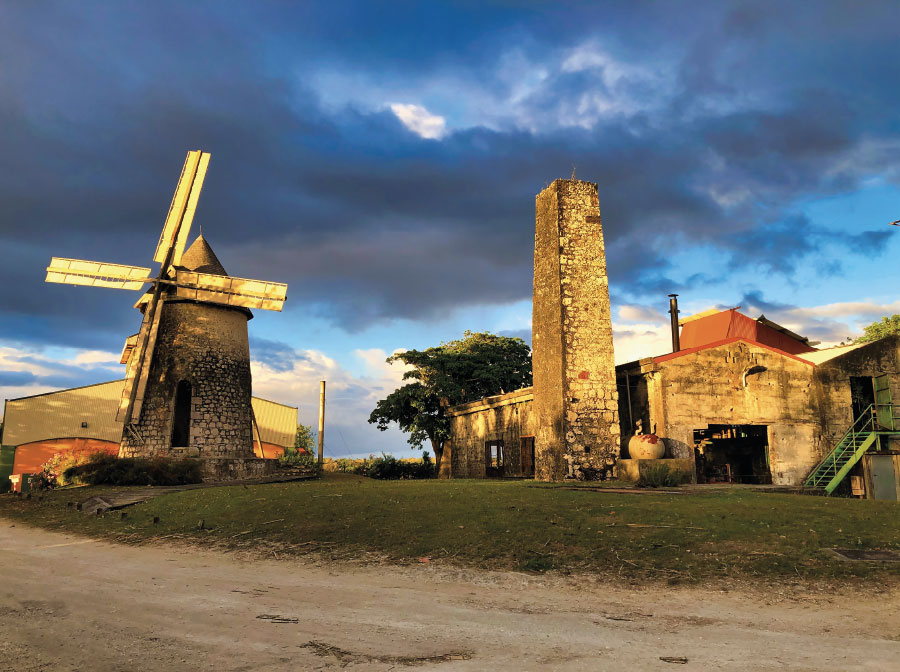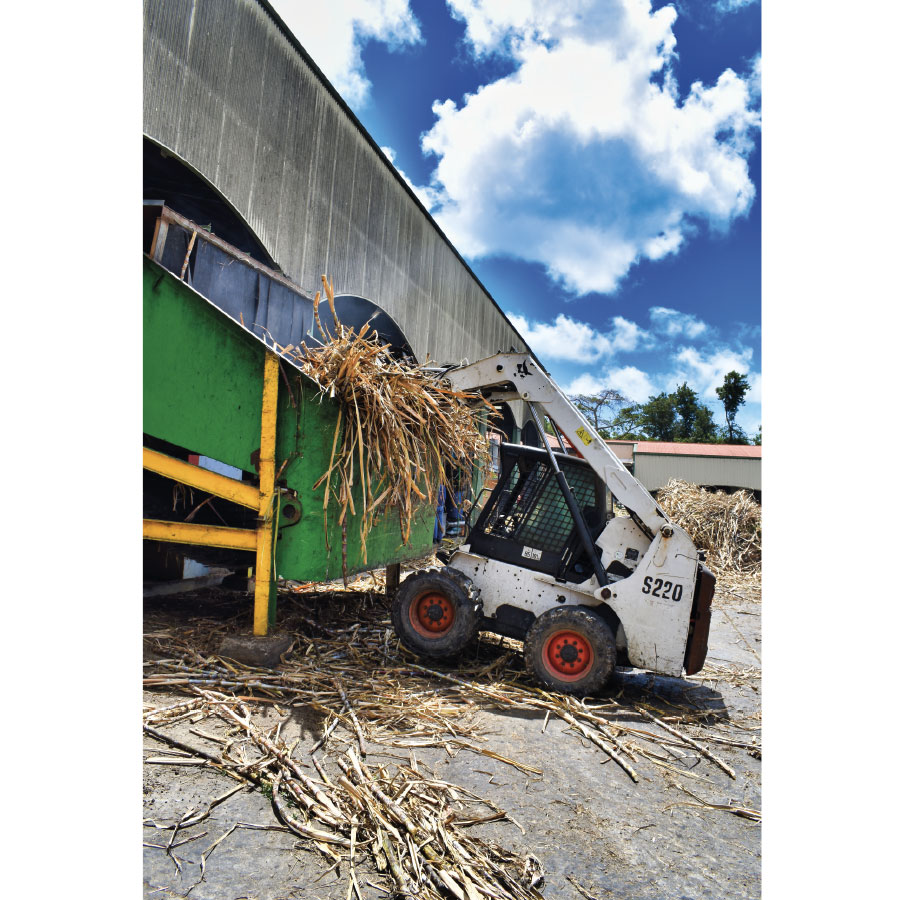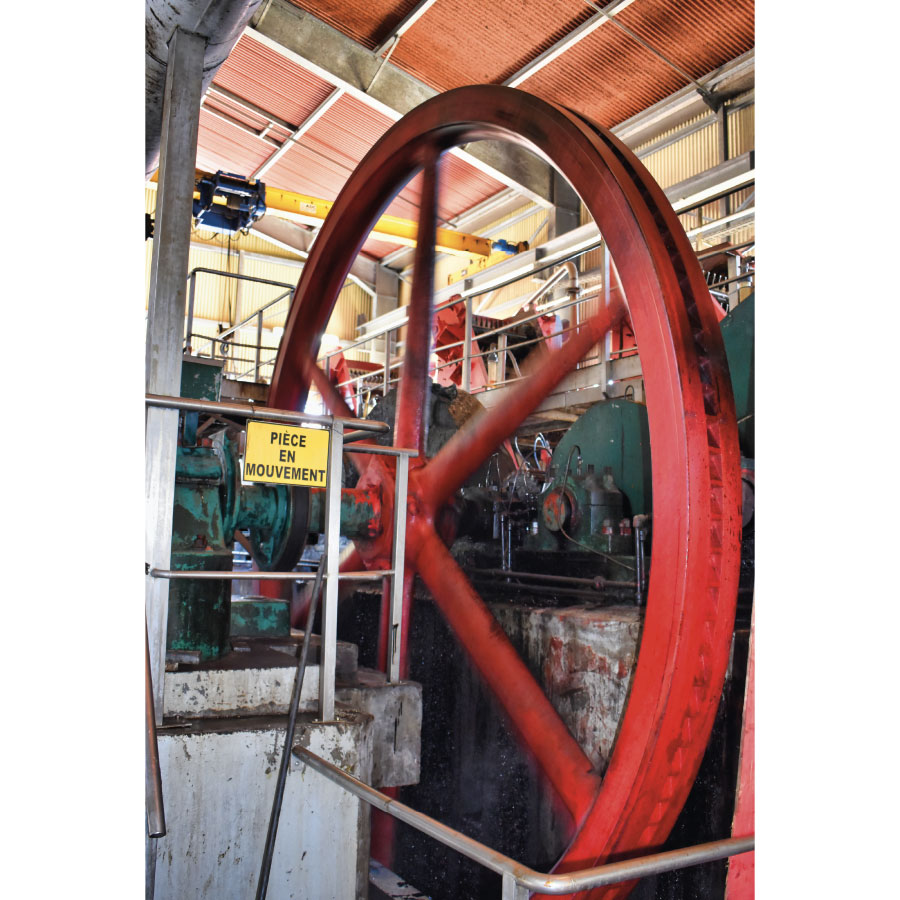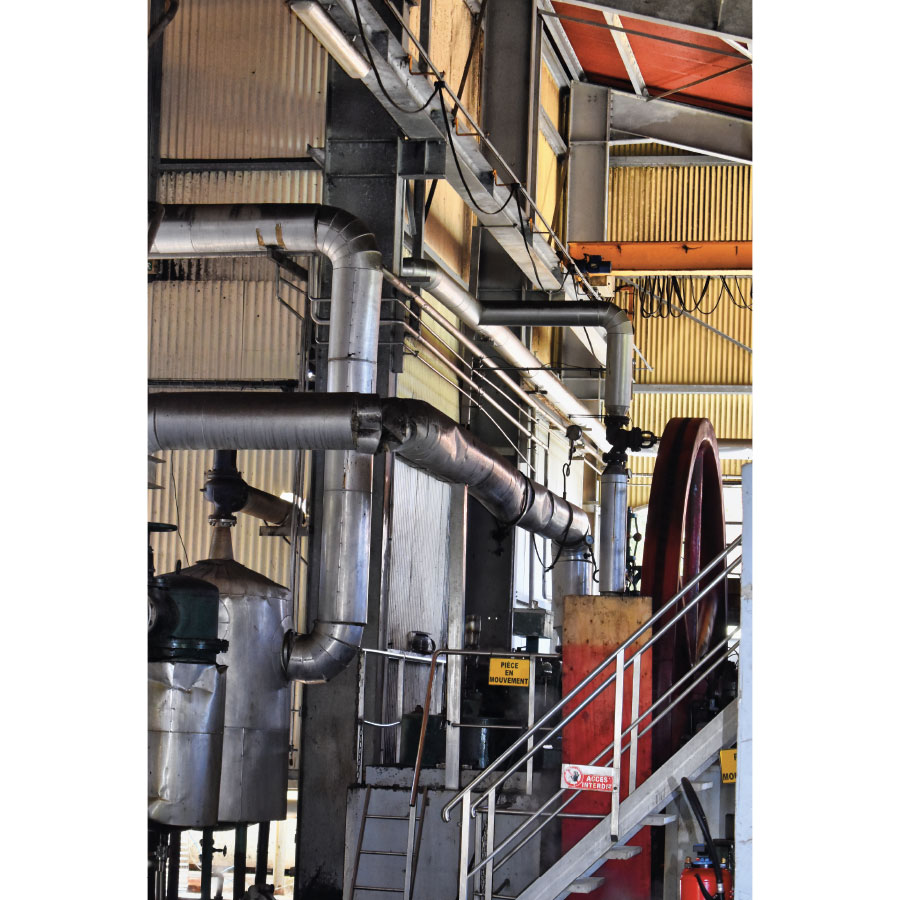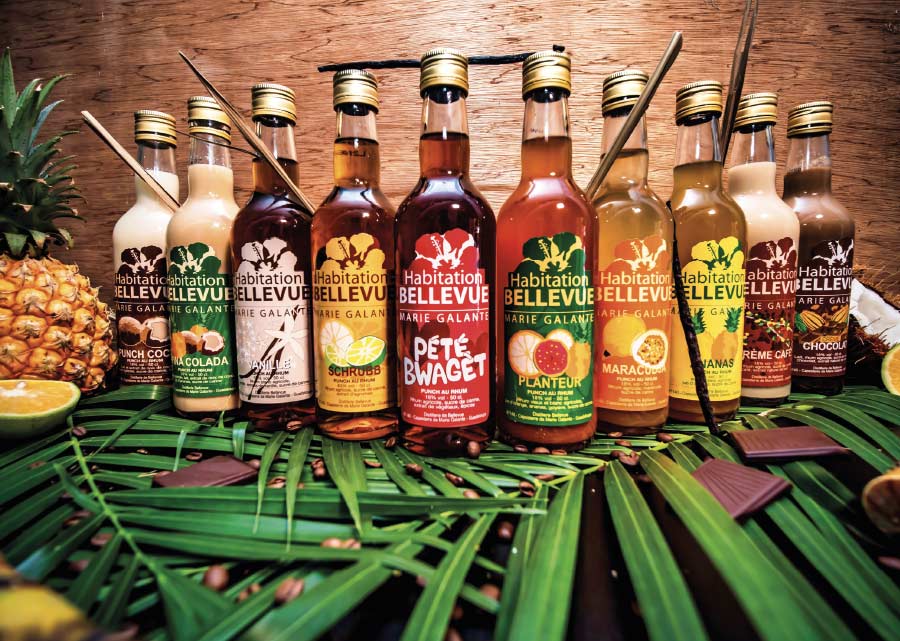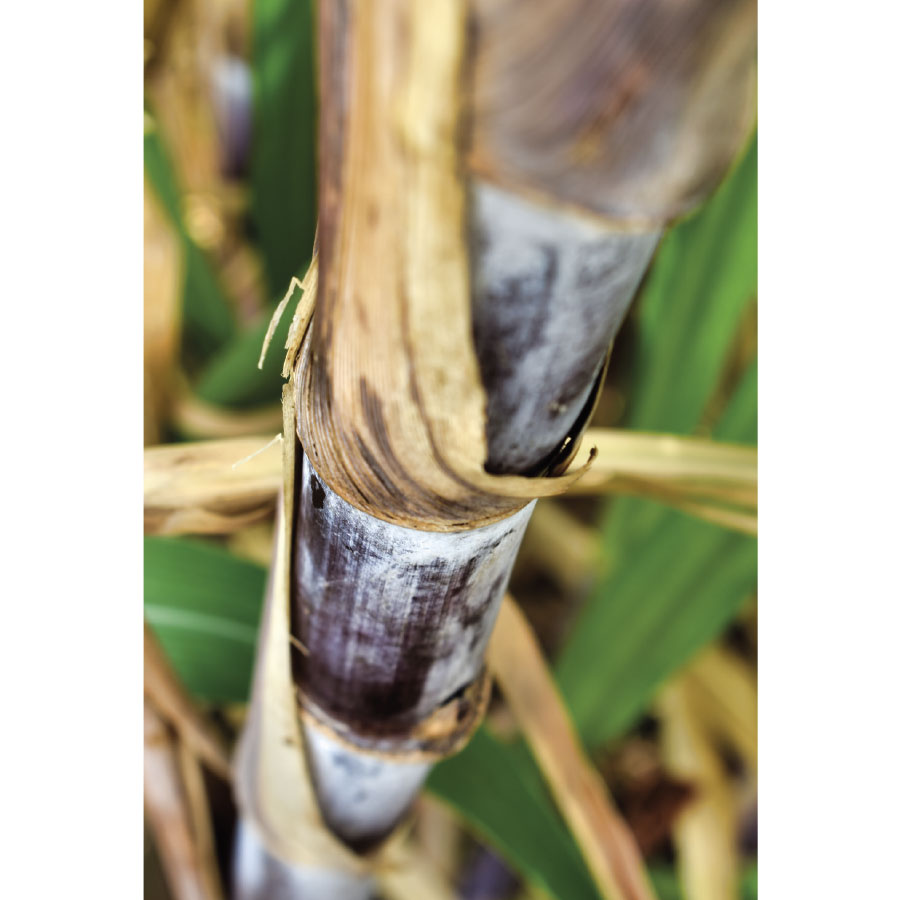Since its takeover by Bardinet in 2001, Habitation Bellevue has made a spectacular recovery, and has become one of the two biggest rum exporters in Guadeloupe. With the Damoiseau family still at the helm, the company was also able to take the turn towards ecology and sustainable development very early on. Latest avatar to date, the release of an organic rum.
The traces, or first stones laid, of the Domaine de Bellevue in Marie-Galante date back to the 17th century. Initially, rum was not produced there, but rather coffee and cocoa were grown. The production of rum is however proven from 1821. “At the time, they made sugar loaves and distilled the juice that flowed out of them (the sewage),” says Hubert Damoiseau, the current distillery manager.”
It was a molasses rum, since we used a sugar by-product to make rum, but it was much richer in sugar than molasses.” Bellevue switched to agricultural rum at the turn of the 1910s, when sugar production was industrialized. In 1924, Gabriel Godefroy, coming from Indochina, bought the 140 hectare plantation from the Lacave family. In 1928, a devastating cyclone destroyed Bellevue and Gabriel Godefroy (Hubert Damoiseau’s great-grandfather), rebuilt the small factory and equipped it with a distilling apparatus and a steam engine. Very quickly, Bellevue tripled its daily production!
Around 1936 Albert Godefroy (Hubert Damoiseau’s great-uncle) took over from Gabriel. He managed this very traditional factory until 1995, when the SA Des Rhumeries Agricoles de Bellevue Marie-Galante was created in association with the Erstein group which was also the operator of the sugar factory. Despite this alliance, Bellevue was close to bankruptcy. In 2001, the Damoiseau family decided to find a new partner.
It was the Bordeaux group Bardinet, a subsidiary of COFEPP which also owns Depaz, Dillon, Old Nick and Negrita. Bardinet became the parent company of the Bellevue estate, but the Damoiseau family remained associated since it still held 12% of the shares.
“My grandmother Godefroy married a Damoiseau and took his name, but we should not be confused with the Damoiseau of Le Moule, even if we are cousins,” explains Hubert Damoiseau. Bellevue is therefore one of the few companies in the ton group where a partnership with the former owner remains.
From 200,000 to 1.6 million litres of 50° rum
For Bardinet, it is a master stroke because the group gains a foothold in Guadeloupe and takes over the quota of 1294 hectoliters of pure alcohol per year (PAH) (increased to 3891 in 2022), the second of Guadeloupe. But the Bordeaux group also decided to invest to make Bellevue a modern, efficient and green distillery.
4.4 million euros, 50% of which is financed by the Docup trio (State-Region-Europe), are thus invested to build a new distillery a few steps from the old one. The work will be spread out over 2001 and 2002 and the start-up will take place in 2003. In a few years, Bellevue became a giant of the French West Indies rum industry and went from a production of 200,000 equivalent litres of rum at 50° to 1.6 million today. Thanks to the 3,000 tons of sugarcane that the estate (62 hectares planted on 140) produces per year and the 9,000 tons that are supplied by planters.
40 hours of fermentation
Most of the sugar cane sent to the distillery is harvested by machine to ensure freshness. The first machine cane arrives at 7am and by 8am it is already fermenting. “Some planters still work by hand on plots that are not adapted to the machine and we also use some long canes, but we also make sure that it is very fresh”, informs Hubert Damoiseau.
The new distillery has four four-roll mills with a cane cutter and a Schreder upstream. The first 3 mills are powered by a 115 year old steam engine. 120 tons of cane are crushed every day. The compounding is done with water and juices with a very low sugar content. The juices are then filtered and sent to the stainless steel fermentation tanks. “We started with 8 vats of 15,000 litres and today we have 16 vats of 20,000 litres and we are going to go to 18 vats very soon”, Hubert Damoiseau is very pleased.
Fermentation lasts more or less 40 hours, although this can go down to 35 or 30 hours depending on the circumstances. “We did some tests with selected yeasts, but given the heat and humidity of Marie-Galante, it did not work and we use baker’s yeast. “We prefer to work at the bottom of the tank rather than in the mother tank. We prepare them the day before for the next day,” says Gabriel Godefroy’s descendant.
Today two columns are working at full capacity, one in stainless steel and the other with a copper concentration head. In general, the rum comes out at 78° of alcohol, but it can vary according to the products. Once the rum is distilled, the reduction-brewing period must last 3 weeks. “For us, for white rums of the local market it is a minimum of 10 months. For rums shipped to France, it is more variable, with a minimum of 2 months, then 15 days of transport, the setting in tank…
In short it is several months. The rums sold in mainland France are shipped in large vats and bottled on site. “It’s an economic and ecological choice. In a 20-foot container, we can put a maximum of 14,000 bottles, while in a tank we can ship 26,000 litres, which will give almost 40,000 bottles in France,” argues Hubert Damoiseau. In 2022, Bellevue is the first or second exporter of rum in mainland France for Guadeloupe touching with Damoiseau.
Soon an ESB and (even more) aged rums
The old rums are mainly aged in ex-bourbon barrels and some ex-cognac barrels. In the new winery under construction in Bellevue 1000 will be able to be accommodated, there will be ⅔ of bourbon and ⅓ of cognac. “Today we only make age count: 3, 4, 6, 10, 12 years old. We are thinking about doing vintages, maybe within 3 years. And next year we will release an ESB.
As we have very old rums, we will go beyond the 12 years in the months and years to come. The volumes are there”, reveals Hubert Damoiseau. In addition to its aged rums, and its white rums (50°, 59° and 59° organic), the Habitation also produces punches (pineapple, coffee cream, chocolate cream, maracudja, Pina colada…), liqueurs (Mojito, green lagoon, blue lagoon, honey barrel…).
Sustainable development as DNA
It is impossible to talk about Bellevue without mentioning sustainable development. Indeed, since its construction in 2001-2002, the distillery has been designed so that all waste is treated. For example, lagoons are used to treat the vinasse.
After more than seven months of oxygenation, the treated vinasse is returned to the cane fields. The remaining sludge can be used for agricultural spreading, as well as the ashes and combustion dust from the boiler, which burns the bagasse generated by the grinding process.
This boiler turns the 115 year old steam engine that drives the mills and provides the heat for distillation. Even better, Bellevue prides itself on being an eco-positive estate. Indeed, 4 hectares of the estate are home to the first solar farm in the Caribbean, with nearly 10,000 solar panels producing 2mwh, which is equivalent to 30 to 40% of Marie-Galante’s electricity consumption, or 2,400 tons of CO² avoided annually. Finally, the Bellevue estate has recently converted some 1.30 hectares to organic (other hectares have since been converted), which has enabled it to release its first organic white rum.
“We were the first in Marie-Galante to distill organic rum (in February 2021, at the beginning of the campaign), but as we aged it in vats for 16 months before marketing them, we released it after our colleagues,” explains Hubert Damoiseau. We didn’t want to rush and we released it in June 2022, only for the local market.”
The Habitation Bellevue de Marie Galante, Section Bellevue – 97140 Capesterre de Marie-Galante: www.habitation-bellevue.com
Visit possible every day, from 9 am to 1 pm.
Ti-Boutik : (+590) 590 97 29 58

